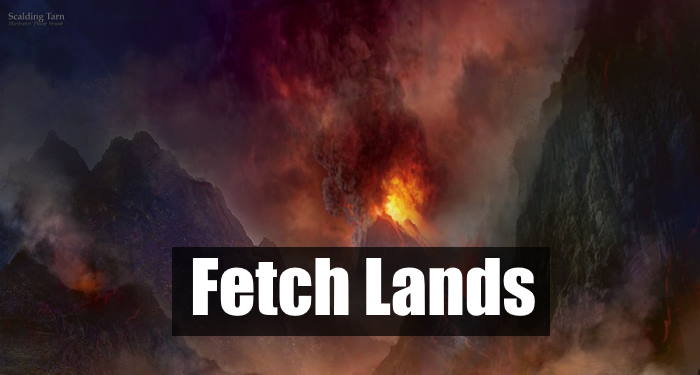When building a new deck, it’s easy to underestimate the power that lands can offer you. Many players only think about their land base after deciding on all the spells they want to run. However, If you want to build the most efficient MTG deck you can, it’s important to understand the power of fetch lands.
The term ‘fetch lands’ refer to any land in MTG that you can sacrifice to put another land from your library onto the battlefield. You play them from your hand, just like any other land, but they usually don’t tap for mana.
Although ‘fetch lands’, or just ‘fetches’, refer to this broad category, many players also use this name for the original fetch lands. The allied-color cycle was first printed in Onslaught, and the enemy-colored cycle came in Zendikar. These cycles are what most MTG players think of when they hear ‘fetch lands’.
It may be difficult to understand why fetches are some of the best lands in MTG. The rest of this article will help you learn more about their subtle power, as well as how to work them into your deckbuilding.
Table Of Contents:
- What Are Fetch Lands?
- Why Are Fetch Lands Good?
- When Should I Use Fetch Lands?
- Are Fetch Lands Being Reprinted?
- End Step
What Are Fetch Lands?
As I’ve already mentioned, the term ‘fetch lands’ applies to any land that sacrifices itself to put another land from your library onto the battlefield. Many lands fit into this broad description, such as Evolving Wilds, which is a common reprint in standard-legal sets.
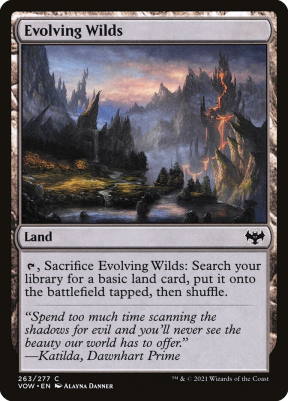
However, when most MTG players talk about fetch lands, they’re referring to the original cycles of fetches. These cycles include the ally-colored fetches from Onslaught, such as Bloodstained Mire, and the enemy-colored fetches from Zendikar, such as Arid Mesa.
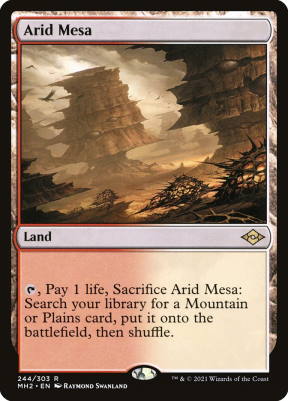
These ten lands all work the same: you pay one life, sacrifice it, then search your library for a land with one of two basic types, and put it into play untapped. Arid Mesa, for example, lets you get either a plains or a mountain.
How Common Are Fetch Lands in MTG?
It depends on which lands you’re looking at. The original ten fetches have only been printed a few times, and they’ve always been rare or mythic. Less powerful fetches, such as Evolving Wilds, appear in more products and at lower rarities. As is often the case in Magic, the more powerful the card, the smaller the supply.
What Kinds of Fetch Lands Exist in MTG?
There are more fetch lands than just the original ten. Some of them belong to cycles, which have identical versions for various color combinations, and others are unique designs.
The cycles include:
| Cycle | Color Combinations | Example |
| Fetch lands | All pairs | Scalding Tarn |
| Slow Fetches | Ally-colored pairs | Bad River |
| Panoramas | Three-color wedges | Naya Panorama |
The unique designs include:
- Evolving Wilds
- Fabled Passage
- Maze’s End
- Prismatic Vista
- Terminal Moraine
- Terramorphic Expanse
- Thawing Glaciers
- Warped Landscape
I’ve excluded cards that give you more than one land from this list, such as Myriad Landscape. These lands act more like ramp than typical fetches, and their abilities are usually a greater investment as well.
RELATED: The Best Green Ramp MTG Cards for EDH
Why Are Fetch Lands Good?
Even if you’ve played MTG for awhile, it can be difficult to recognize why fetch lands are so strong. After all, most players don’t think about their land base when looking for the best cards in their deck. Still, the consistency that fetch lands offer make them some of the most impactful cards ever printed, and there are tons of cards that synergize with their effect.
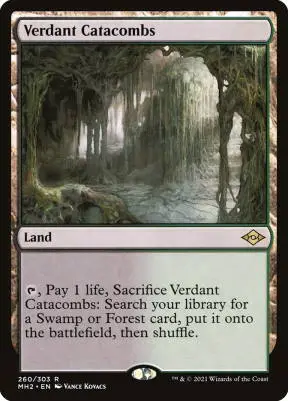
Notably, this section is discussing the Onslaught and Zendikar fetch lands. Although all fetch lands share some of these strengths, most fetches don’t come close to the power level of the original ten.
What Lands Can Fetches Get?
The main advantage of running fetches is that they can help you get the right colors of mana. Let’s look at Wooded Foothills as an example.
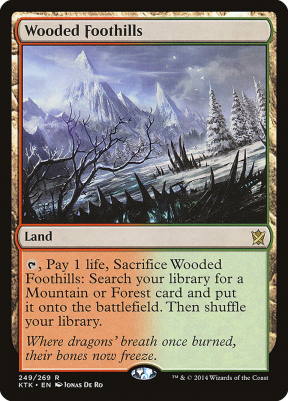
If you were playing only mountains and forests in your red-green deck, you might draw a hand that only has forests. That can put you in a tough spot, especially if you have lots of red spells in your hand. With Wooded Foothills, however, you could get whatever you need. Even if all the other lands in your hand were forests, you could fetch a mountain and fix your colors.
Of course, that’s assuming that you only have basic lands to fetch. None of the original fetch lands specify that you have to get a basic land, and that’s where the real power lies. With Wooded Foothills, you could get Blood Crypt because it’s a mountain. You could get Savannah because it’s a forest. With the right dual lands, you can use a fetch land to get any color you need.
RELATED: MTG Dual Lands: All Your Questions Answered
The land you fetch also comes into play untapped, giving you both efficiency and consistency. Most other fetches can only put a land into play tapped, which is too slow for most formats. Getting any land from Terramorphic Expanse is nice, for example, but its effect is only strong in casual or low-power formats. Usually, you can’t afford to lose tempo by having less mana than your opponent for a turn.
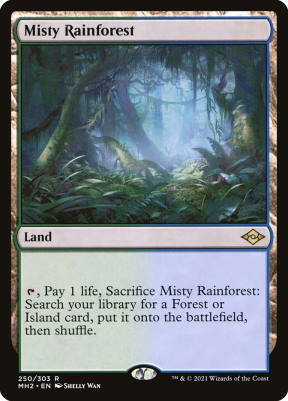
What Other Niche Effects do Fetches Have?
Fetch lands also interact well with some of the best cards and strategies in MTG. I’ll list some of the best synergies here, but there are so many small ways to gain an edge with fetches.
First, you have to sacrifice these lands as part of their ability. This trigger synergizes really well with aristocrats strategies, as cards like Korvold, Fae-Cursed Kind or Mayhem Devil will trigger from that sacrifice. Drawing a card from your land drop just gives you so much value!
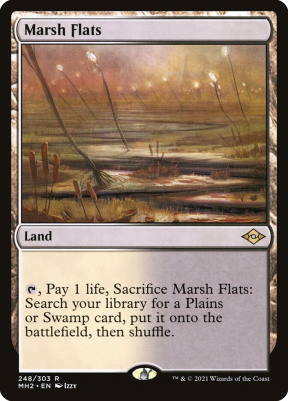
Fetch lands also fill up your graveyard, and some of the best cards in MTG make use of this zone. Treasure Cruise can exile cards for a discount, and Emrakul, the Promised End wants you to have as many card types in the bin as possible.
Perhaps the most famous card that interacts with fetch lands is Brainstorm. Normally, drawing three cards and putting two on top of your deck is just a solid way to sculpt your hand. You’ll end up drawing those two cards anyway, so it doesn’t have much impact on your hand in the long run. With fetches, however, you can shuffle your deck on demand.
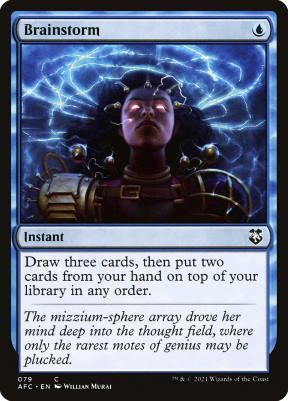
When you cast Brainstorm with a fetch land in play, put your two worst cards back on top of your deck. Then, activate your fetch land and shuffle your deck. Now, you’re more likely to draw useful cards, all while keeping your best cards.
Lastly, fetches work incredibly well with landfall. Since you can play a fetch land and use it to find another land in the same turn, you can get two landfall triggers off of your turn’s land drop. Any of the powerful landfall finishers become ridiculously efficient with this trick.
When Should I Use Fetch Lands?
You might be wondering: if fetch lands are so good, then why doesn’t every deck run them? Putting aside their steep prices, there are some decks that simply don’t need them.
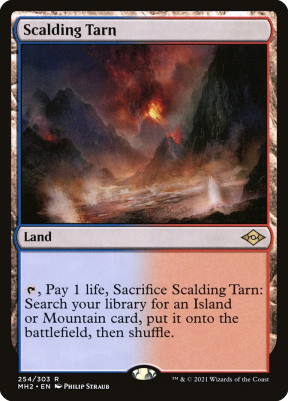
The most obvious reason a deck wouldn’t run fetches is if it only needs one color. If you don’t need to fix your mana, it’s unlikely that you need fetch lands. Even two-color decks don’t need that many fetches.
Fetch lands can make those decks better, but their real strength is enabling three, four, or five-color mana bases. These decks are the ones that need fetches to consistently find all of their colors, and they’ll usually run the most fetches.
How Many Can I Have?
In most formats, you can only have four copies of any given fetch land in your deck. If you’re playing a singleton format, like Commander, then you can only have one copy of each unique fetch land. Other than these restrictions, you’re free to include as many fetches as you want.
How Many Should Be in a Deck?
Of course, you shouldn’t just fill your deck with fetch lands just because you can. Building a mana base with fetch lands requires a fine balance. You need to make sure you have enough lands to get with your fetches, as well as enough fetches to draw them consistently and find whatever color you need. You also need to make room for any utility lands you might want to include.
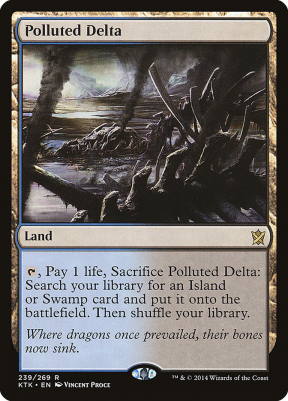
Every deck will have different needs depending on its color requirements and synergies. Generally speaking, most decks will run about six to ten fetch lands. That’s certainly not a rule, as your deck might want to go above or below that range. If your deck has strict color requirements, or lots of early plays of different colors, you might want to run more fetches. The more flexible your mana base needs to be, the more fetches you should have.
In EDH, you could run anywhere from zero fetches to all ten depending on what you’re trying to do. The more you can include, the stronger your mana base will be, especially if you’re playing three or more colors. However, fetch lands aren’t necessary to have a good deck. In low to mid-power level groups, you can have a great deck with zero fetches. Still, they can absolutely take your deck to the next level.
RELATED: MTG Commander: The Ultimate Guide
Are Fetch Lands Being Reprinted?
For cards as impactful and game-changing as fetch lands, it’s important that WOTC is willing to reprint them. Most players looking to start Modern, Vintage, or Legacy will need to acquire these lands to build the deck they want. Even Commander players can use fetch lands to upgrade their favorite decks, and they’re crucial for four and five-color decks.
WOTC has recently reprinted the enemy-colored fetch lands in Modern Horizons 2, and hopefully this shows that they’ll be willing to reprint them again in the near future. At the moment, fetch lands cost about $20 or more, and that’s even with the recent reprint. The price for these cards will only climb as more players join powerful formats, so it’s important to maintain a reasonable supply.
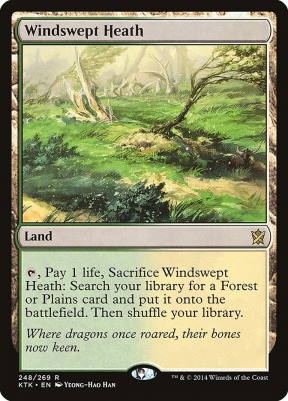
Admittedly, it’s tricky to find the right product to reprint them in. They’re too powerful for standard, so they can only appear in supplemental products. Powerful staples are also usually used as chase rares, so it’s unlikely they’ll start appearing at a high frequency. Still, some reprints are better than none, and there will hopefully be more before prices get too out of control.
End Step
If you weren’t too sure about fetch lands before, I hope I’ve convinced you that they’re some of the best lands in MTG. The consistency they offer you can’t be understated, and there are so many cards that work wonders with fetches. Now, what are you waiting for? Start cracking, shuffling, and playing with some of Magic’s most powerful cards!
